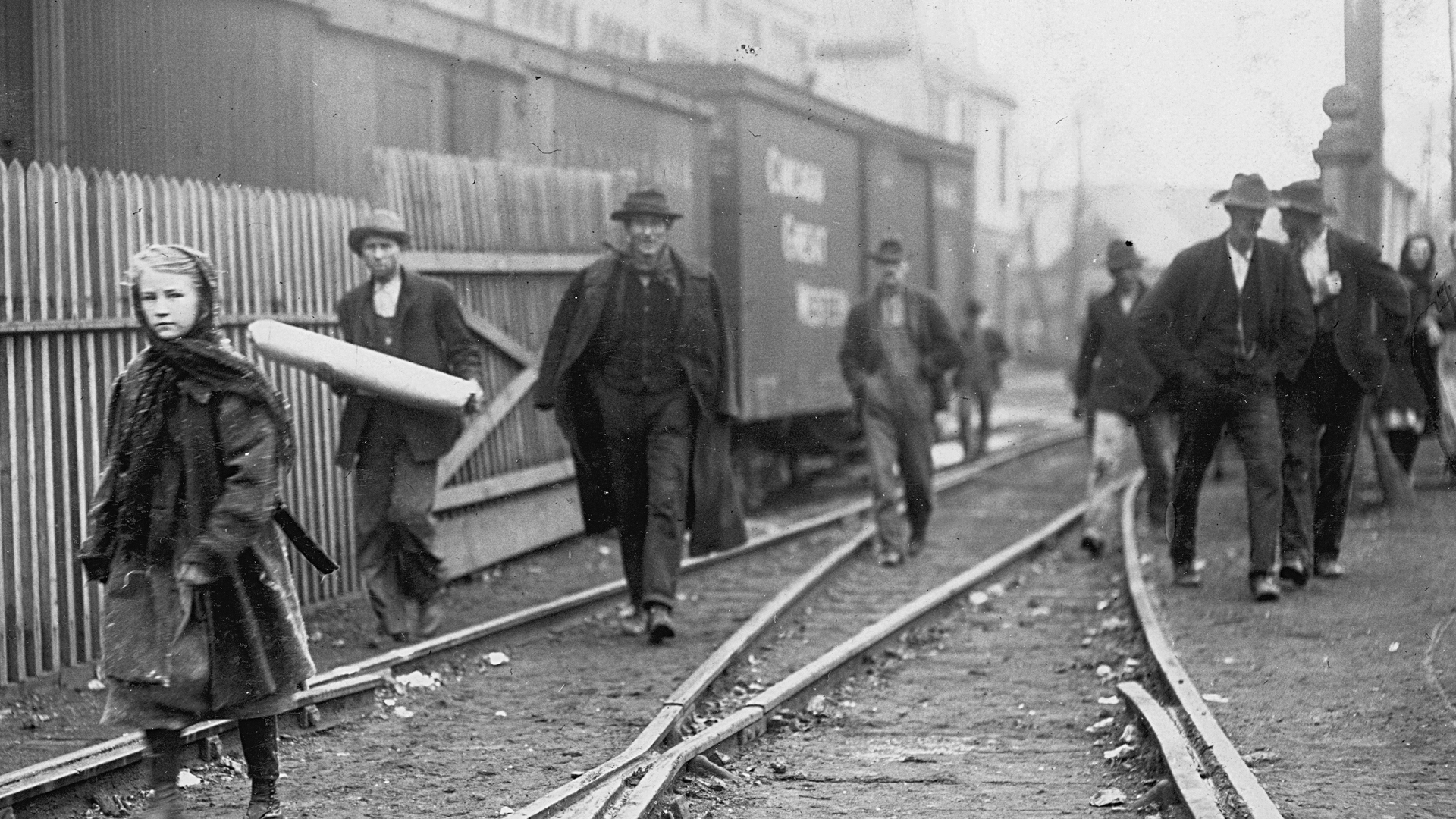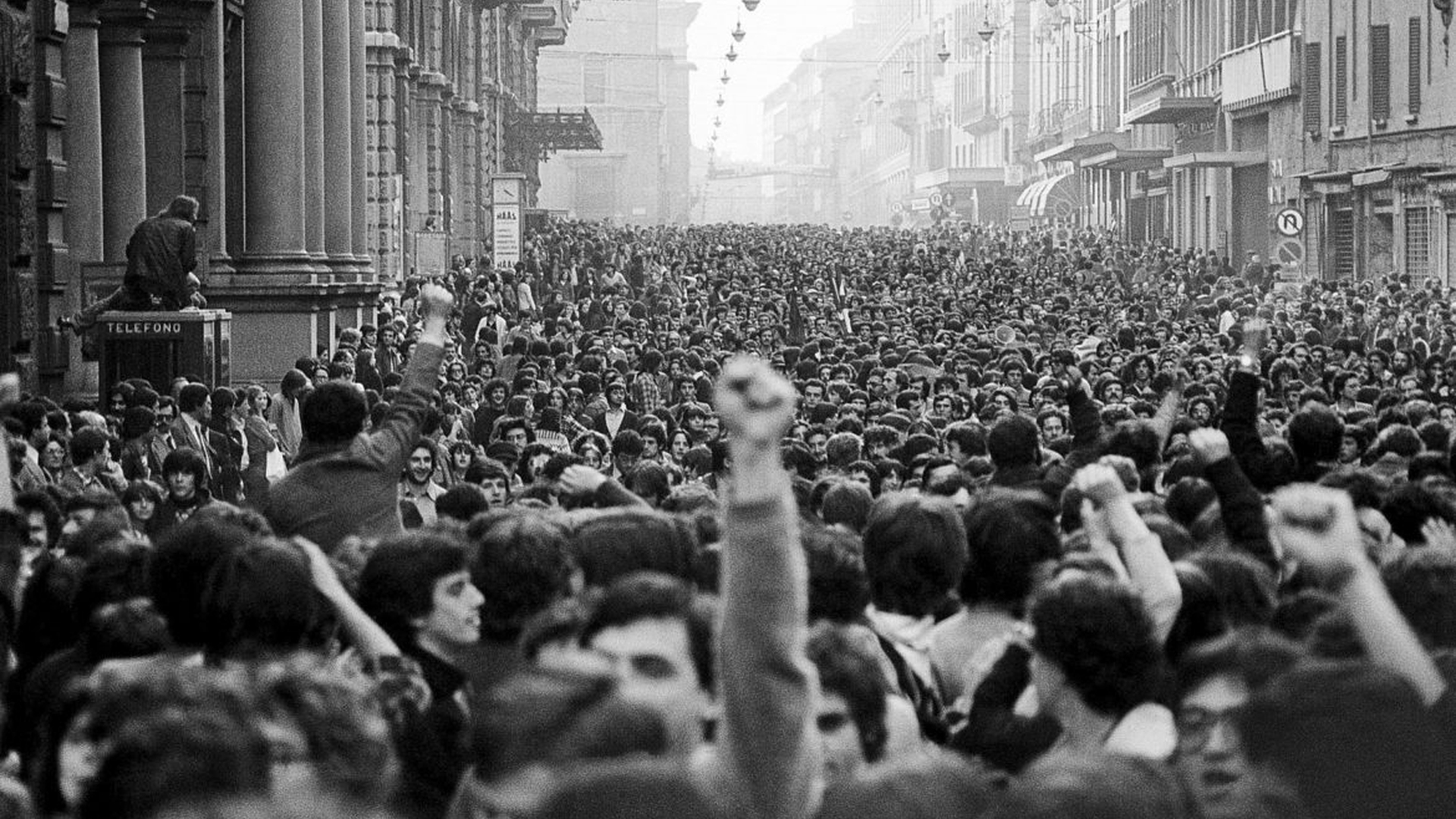The wave of worker resistance in European food platforms 2016-17
by
Callum Cant (@CallumCant1)
January 29, 2018
Featured in No Politics Without Inquiry! (#1)
Has a wave of conflict between food platform workers and bosses spread across Europe?
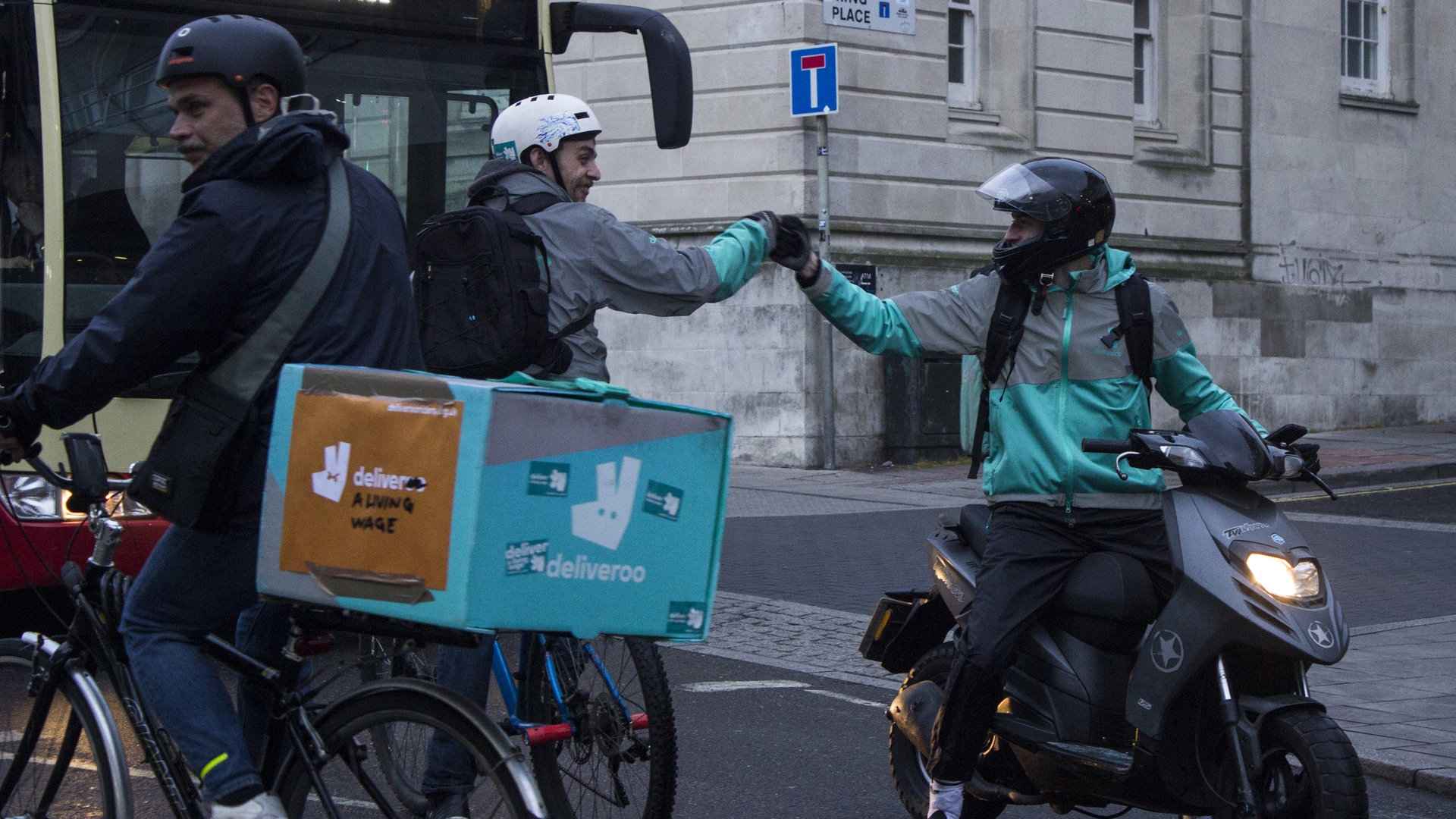
inquiry
The wave of worker resistance in European food platforms 2016-17
by
Callum Cant
/
Jan. 29, 2018
in
No Politics Without Inquiry!
(#1)
Has a wave of conflict between food platform workers and bosses spread across Europe?
Militant research into food platforms matters for two reasons. First, the segment of the capitalist class that owns these platforms have been early adopters of algorithmic management technology, which has transformed the labour process of traditional food delivery through the automation of supervision. Second, platform workers have resisted the conditions created by this reorganisation of the labour process, leading to a widespread series of skirmishes between workers and bosses.
Despite this combination of technical and political importance, most militants have a limited understanding of the actual dynamics of worker resistance in food platforms. Either it is seen as catch-all case study of worker resistance in fast-changing technological conditions, or as a confusing marginal phenomena. Both of these misunderstandings have been challenged by the emergence of a current of workers inquiries into food platforms. These inquiries have developed serious insights into the reorganisation of the labour process and resulting worker resistance. Because of that research we can understand the preliminary outline of the class composition of food platforms. Now we have an opportunity to go further.
Worker resistance on food platforms is spreading between countries. Back in August, I first argued that we were seeing a transnational wave of action and organisation. In the months since, strikes and protests have spread to the Netherlands and Belgium. But so far this wave of worker resistance has been difficult to analyse. The lack of hard evidence about the quantity, location and intensity of strikes and protests has proved to be a serious barrier. This article attempts to get past the problem. To do so, it presents the results of a small research project which aimed to collect the hard evidence we are missing.
Data From Below
Before workers get organised, they need to understand their own situation. This kind of research is not a specialised academic function, it is a basic part of all class struggle. This is the first step in a workers’ inquiry. This article presents the results of a workers inquiry project to collect data on strike action and protests by food platform workers. It aims to allow workers and their supporters to understand their own situation, and then to act on it.
Official strike statistics do not sufficiently describe worker resistance in food platforms. The workers have irregular employment status, and they tend to use informal strikes and protest tactics. This makes data collection based on formal trade unionism ineffective. We can assume that the bosses of food platforms are collecting private statistics of some kind, but these are not accessible to workers. As a result, working class knowledge of the scale of resistance has, so far, remained both local and partial. But a process of worker-to-worker communication can overcome this isolation. Lots of different local areas of knowledge can be collectively developed into a big picture.
This research project aimed to facilitate that communication. The participants were all workers and supporters involved in a European food platform network covering seven countries: the UK, Netherlands, Germany, Spain, Belgium, France and Italy. The members of this network were asked to report their own strikes and protests. These reports had three elements: a description, an estimate of the number of workers involved, and links to media coverage or discussion by participants. The reports were then added to a collectively-edited timeline, which provided the information for an independent dataset on worker resistance.
This methodology has some clear limitations. The European network has a varying level of connection with workers across different countries. We will inevitably have missed out some strikes or protests. This incompleteness is not helped by the form worker resistance in food platforms usually takes. Its common features include distributed leadership, disconnection from trade unions, and spontaneous mobilisation in response to working conditions - all of which make data collection more difficult.
The metric I have used in my analysis of the dataset is the total number of workers mobilised per month. It has its own flaws. There are two instances of multi-day mobilisation: the August 2016 London strike and the March 2017 Marseilles strike. In both these cases, workers kept on striking for days at a time. But this metric records them as if they were only on strike for a day. The metric also collapses the distinction between strikes and protests. Strikes and protests are different forms of action, but every worker mobilised counts for the same amount. These flaws are frustrating, but also somewhat unavoidable. Data from below is never going to be perfect. What matters is if it is good enough to contribute to the expansion and development of worker resistance within food platforms.
Intensity and Synchronicity
Altogether, the dataset covers 41 incidents across 18 months in 7 countries involving an estimated 1493 workers.
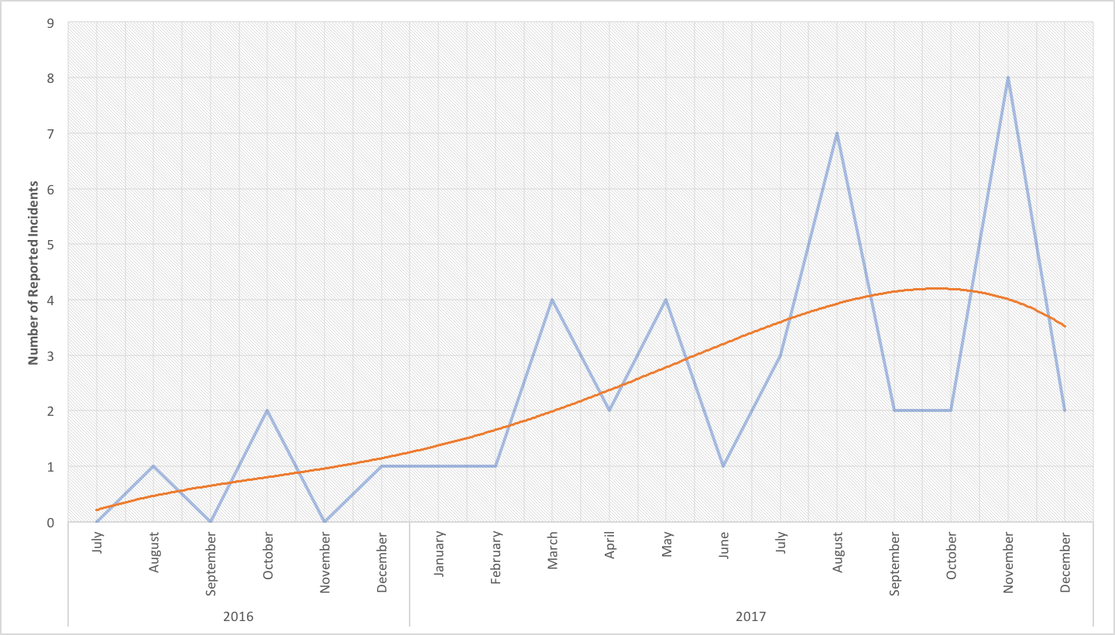
From July 2016 to December 2017 there was a clear upward trend in strike or protest incidents per month. But the trend in overall intensity of these incidents is less clear. When we look at the estimated number of workers mobilised per month, the sporadic nature of worker resistance becomes more evident.
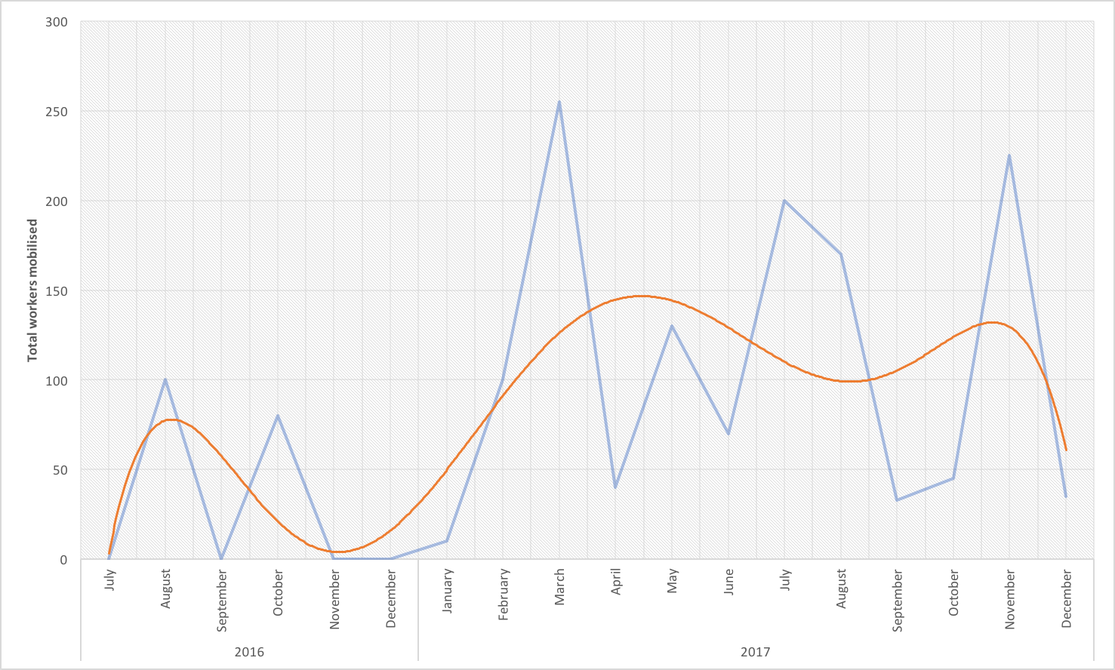
The last 18 months have seen three sporadic peaks of mobilisation, even as the overall number of incidents trends upwards. The first is summer 2016, the second is spring 2017, and the third is winter 2017. Taken as a whole, we can see for the first time the scale and dimensions of the food platform workers’ movement on a transnational scale. When we analyse the number of workers mobilised quarter by quarter to iron out some of the variation, the trend becomes clear.
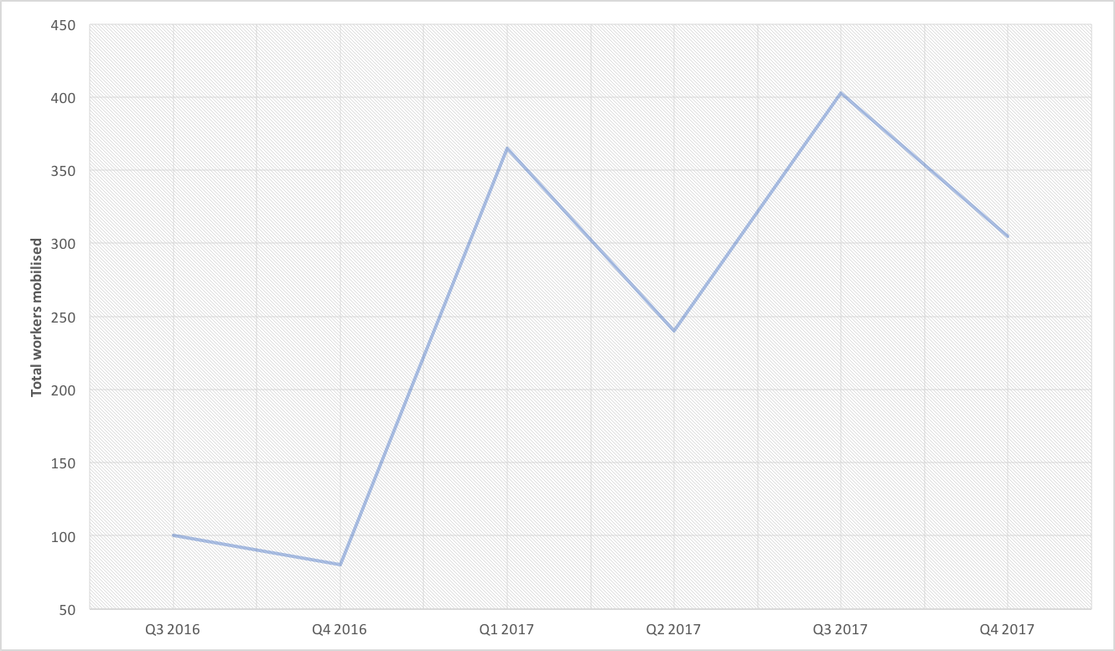
This upwards trend in incidence and intensity of food platform worker resistance wasn’t flat across all seven countries. The big picture is made up of specific local movements, with their own cycles and trends.
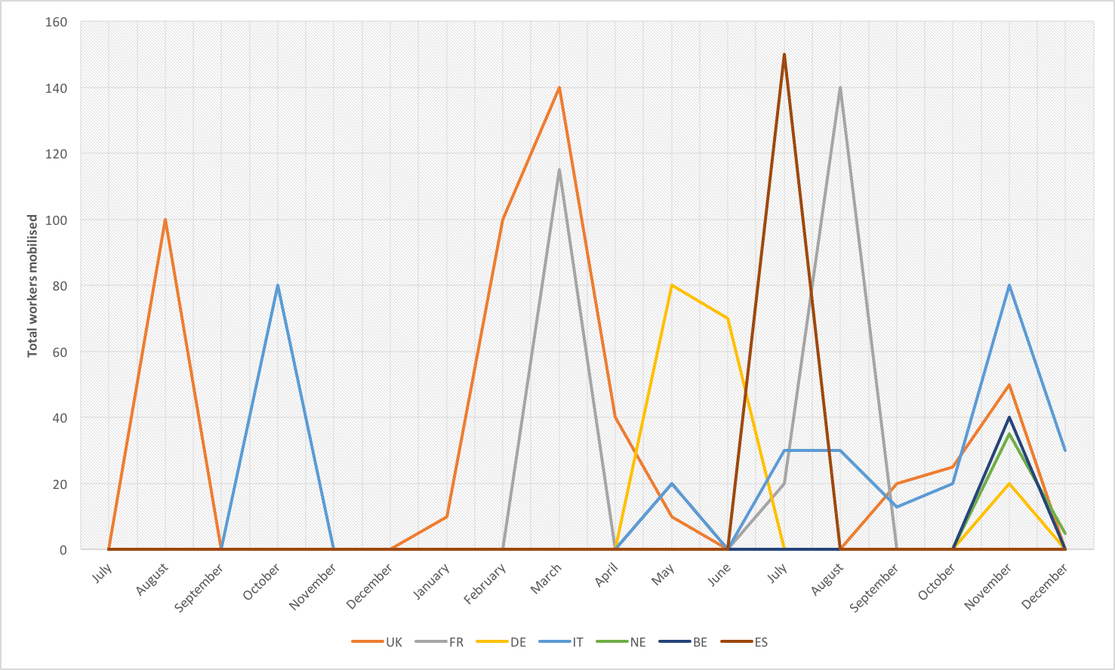
With this national data, the peaks mentioned above become easier to understand: they are the result of coinciding local movements.
The first peak is a result of the first UK (London) and Italy (Turin) strikes. It is followed by a total decline in mobilisation in November and December 2016.
The second peak is the result of a second wave of UK mobilisations (Leeds and Brighton) and French mobilisations (Marseilles and Paris). This time, however, it was followed by mobilisation in Germany (Berlin), Spain (Barcelona, Valencia, Madrid) and again in France (Paris, Bordeaux, Lyon).
The third peak is of lower intensity but remarkable synchronicity. Mobilisations in Brighton, Amsterdam, Brussels, Bologna, Turin and Berlin all occur in the same month, November 2017. No single country experienced a noticeably large mobilisation, but combined, the effect was just below that of the UK and French mobilisations in March 2017 (see fig 2).
The locations of all 41 incidents have also been mapped by French workers.
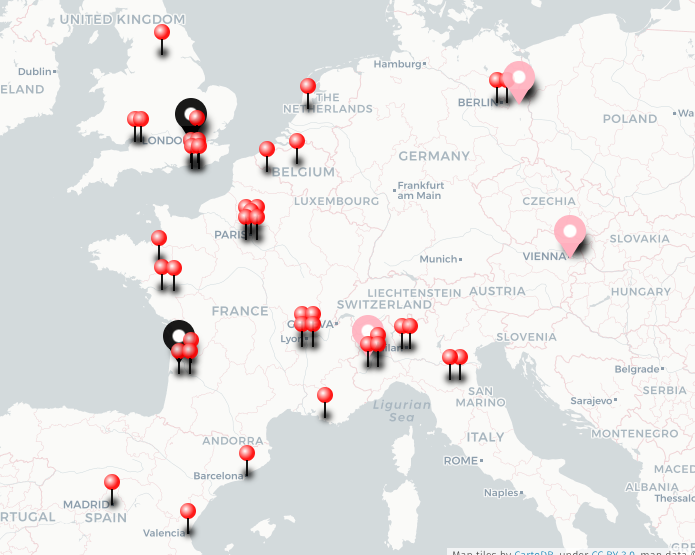
This data allows us to answer the initial question posed by the project: has a wave of worker resistance taken place? A ‘wave’ describes a number of interconnected instances of worker resistance. This independent dataset shows three trends. First is an increase in incidents over time. Second is a sporadic month by month but consistent quarterly increase in the total number of workers mobilised. Third is an increase in the synchronicity of mobilisation across all seven countries. Together these trends confirm that a transnational wave of worker resistance has taken place. However, this confirmation does not provide any guarantees about the future. Will the wave continue? That question that can only be answered by the self-organisation of food platform workers.
Strike proneness, migration, and restructuring from above
Food platforms rely on a specific organisation of the labour process in order to exploit labour-power for profit. They have their own technical class composition. This composition includes one key element: algorithmic management. The digitisation and automation of labour supervision is the defining feature of the terrain of class struggle in the sector. But algorithmic management is spreading across many more sectors of capitalist economies. Hermes van drivers, supermarket night workers, and Amazon warehouse agency workers all share a similar form of management. Algorithmic management costs significantly less than employing human supervisors. This means that despite losses in efficiency and the potential for increased worker resistance, food platforms still extract a greater amount of surplus value extraction per unit of capital.
This means that struggles in sectors already defined by algorithmic management have additional significance. Future avenues for the development of worker resistance are being tested in these laboratories of massification and class struggle. Recent strikes in Amazon and the food platform wave of worker resistance have to be understood with this in mind. In Belgium and Italy, food platform workers from Deliveroo, Foodora and Giovo deliberately struck on Black Friday at the same time as Amazon workers. They wanted to bring together the struggles of workers at the coal face of the 21st century.
An analysis of the transnational circulation of struggle challenges technologically determined pessimism. The assumption that increased technical control of the labour process by bosses will inevitably lead to a reduction in worker resistance is unfounded. The level of class struggle has always been, in the final instance, determined by politics. The transition from technical to political composition is understood as a leap for just this reason.
The example of the assembly line is instructive. As this new organisation of the labour process was developed throughout the early 20th century, many in the workers’ movement predicted their own irrelevance. The deskilling of manufacturing was a direct attack on the working class and their ability to organise. And yet, the assembly line did not resolve the class struggle in the favour of the bourgeoisie. Worker resistance found a new form, and by the 1970s capital was scrambling to abolish a class composition that had given rise to global working class militancy.
Strike proneness in the UK is a useful indicator of the comparative potential for worker resistance in food platforms. A rough estimation suggests that approximately 42% more working days were lost to strike action per worker in Deliveroo than in the total UK workforce over the period from September 2016 to August 20171. This kind of initial speculation suggest that in fact algorithmically managed workers can, in some contexts, be more strike prone than their human-managed counterparts. Further research on this front is essential before we draw conclusions, of course, and worker resistance takes more forms than just the strike. But the possibility is there.
Research is also necessary on the specifics of migration and food platform struggle. In the UK, migrant moped riders have been at the forefront of the largest strikes in London, Bristol and Brighton. Similarly to the Italian logistics sector, migrants forced into low waged, insecure work have taken the lead in the struggle. Further nationally-bounded research on the relationship between platform work, migration and urban unemployment is necessary before we can fully understand this leadership.
Conclusion
The very first day of 2018 saw a Deliveroo strike in Haarlem, the Netherlands. The strike was scheduled to start at 5pm, but by lunchtime so many workers had already signed out that the app ground to a halt. January has also seen strikes and protests in Belgium and France.
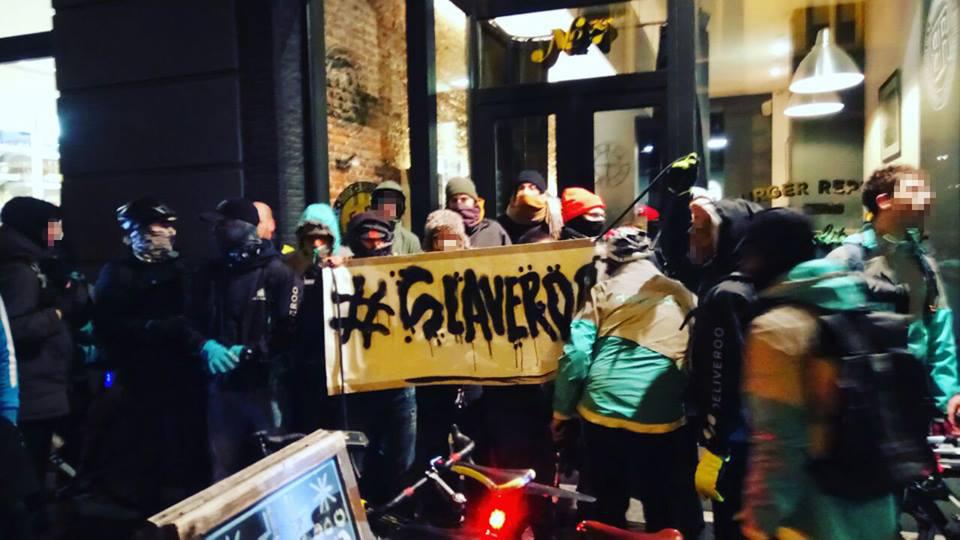
Worker resistance in food platforms is unlikely to continue in a linear fashion. Conflict is always, by definition, unstable. However, it seems at least possible that this transnational wave of resistance amongst precarious labour will continue. In order for that to be possible, further development of transnational worker coordination and organisation will be an essential step.
Further reading
- Facility Waters and Jamie Woodcock, Far From Seamless: A Workers’ Inquiry at Deliveroo
- Arianna Tassinari and Vincenzo Maccarrone, Striking the Start Ups
- Joe Hayns, A Sharing Economy Strike
- Wendy Liu, The Inevitability of the Gig Economy
- Callum Cant, Precarious Couriers are Leading the Struggle Against Platform Capitalism
- Jamie Woodcock, Automate this! Delivering Resistance in the Gig Economy
-
To get a comparative estimate, we can begin with the most recent set of strike statistics from September 2016 and August 2017.Let’s say we estimate that for every UK food platform worker mobilised in that period on average half a day was lost to strike action. Ignore for a moment that UK national strike statics only count strikes longer than one day, for the sake of comparison. These 395 mobilised food platform workers, out of a Deliveroo workforce of 15,000, would have caused 197.5 working days to be lost to strike action. The total UK workforce of 32,100,000 caused 298,000 days to be lost to strike action. If we calculate days lost to strike action per worker on that basis, it comes out to 0.013 per Deliveroo worker, 0.0092 per UK worker. This is all apples-and-oranges speculation, but could potentially indicate a hypothesis for further research. ↩
Featured in No Politics Without Inquiry! (#1)
author
Callum Cant (@CallumCant1)
Subscribe to Notes from Below
Subscribe now to Notes from Below, and get our print issues sent to your front door three times a year. For every subscriber, we’re also able to print a load of free copies to hand out in workplaces, neighbourhoods, prisons and picket lines. Can you subscribe now and support us in spreading Marxist ideas in the workplace?
Read next
